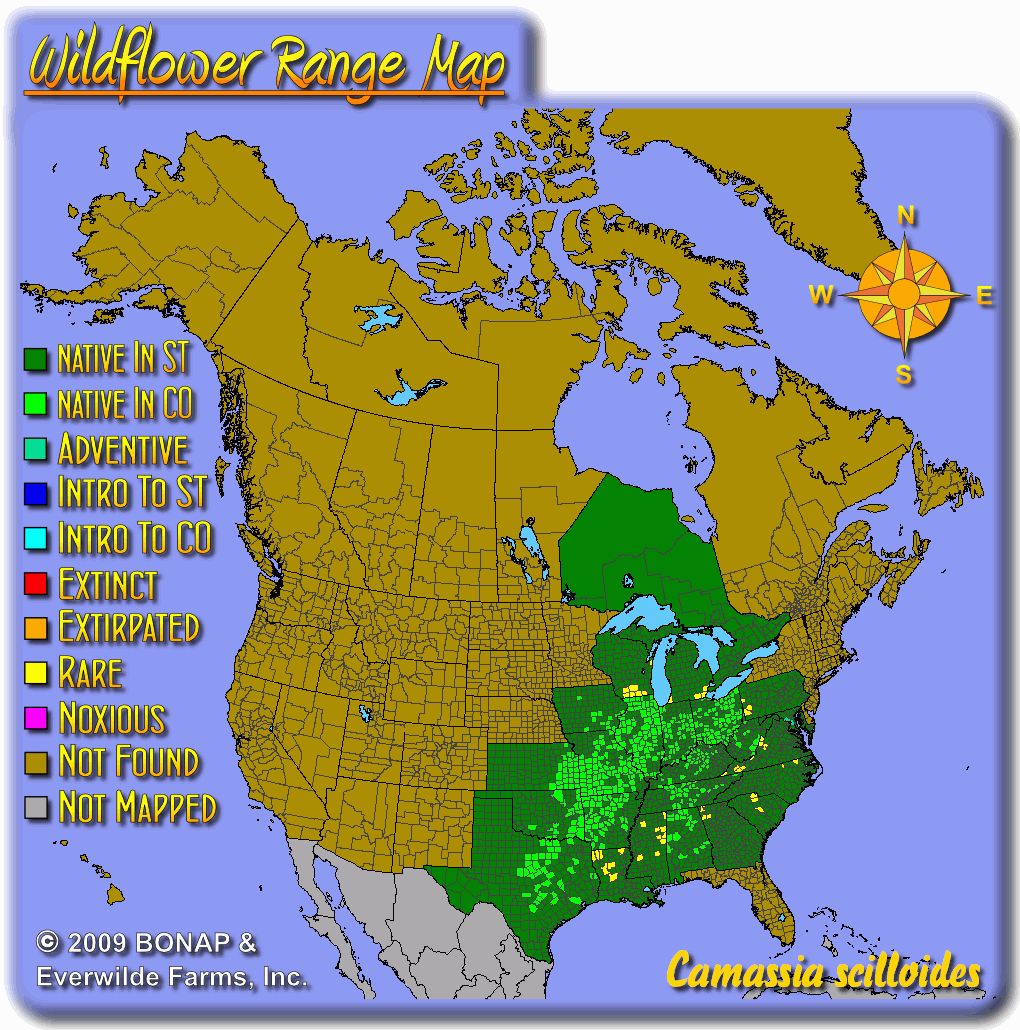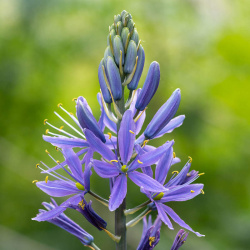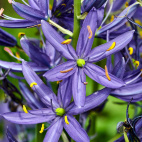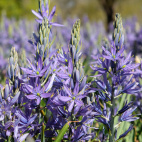Wild Hyacinth Seeds
- HOW TO GROW
- FAST FACTS
- REVIEWS
HOW TO GROW
Sowing: For best results, direct sow outdoors in the fall; plant just below the surface of the soil. This wild hyacinth seed may be slow to germinate. For spring planting, mix the seed with moist sand and store it in the refrigerator for 60 days before planting.
Growing: Though it adapts to many soils including sand, this plant prefers moist, fairly heavy soil such as clay. It develops rather slowly, and may not bloom until several years after sprouting. Seedlings need regular watering as they become established, and mature plants may also need occasional watering in blooming season. High heat or excess moisture may cause this plant to stop blooming or go dormant. After blooming the plant will wither and go dormant until next year; the stem can be cut down after blooming has finished, though this will prevent the development of seed. If left to self-seed, this plant will produce volunteer seedlings. It attracts butterflies and bees.
Harvesting: For fresh flowers, cut the stems and place them in water immediately.
Seed Saving: When the seed heads begin to dry and contain mature black seed, remove them and spread them out to dry. Thresh to remove the Camassia Scilloides seed. Store wild hyacinth seeds in a cool, dry place.
FAST FACTS
Common Names: Blue Camas, Atlantic Camas, Quamash
Latin Name: Camassia scilloides
Species Origin: US Native Wildflower
Type: Native Wildflowers
Life Cycle: Perennial
USDA Zones: 4, 5, 6, 7, 8, 9
US Regions: Plains/Texas, Midwest, Northeast, Southeast
Seeds per Ounce: 4,400
Stratification: Cold/Wet for 12 Weeks
Germination Ease: Stratify 12 Weeks
Sunlight: Full Sun, Part Sun
Height: 18 Inches
Color: Blue
Bloom Season: Blooms Late Spring
Uses: Attracts Pollinators, Attracts Butterflies, Cut Flowers
So disappointed
These are native to this area, but no matter how many times or different locations that I plant these, they just haven't grown.
Wild Hyacinths take a lot of patience. The little bulb might grow to just the size of a BB in the first year with very little above ground. But give them some time, and they will eventually get up to flowering size.
So pretty
I purchased 3 seed packets last year and was so pleased that I ordered many more. I can't wait for the weekend to plant.
Excellent products. Fast shipping
Like the product, hate the packaging.
Packages very hard to open....the seeds are great once you get to them!
DESCRIPTION

HOW TO GROW
Sowing: For best results, direct sow outdoors in the fall; plant just below the surface of the soil. This wild hyacinth seed may be slow to germinate. For spring planting, mix the seed with moist sand and store it in the refrigerator for 60 days before planting.
Growing: Though it adapts to many soils including sand, this plant prefers moist, fairly heavy soil such as clay. It develops rather slowly, and may not bloom until several years after sprouting. Seedlings need regular watering as they become established, and mature plants may also need occasional watering in blooming season. High heat or excess moisture may cause this plant to stop blooming or go dormant. After blooming the plant will wither and go dormant until next year; the stem can be cut down after blooming has finished, though this will prevent the development of seed. If left to self-seed, this plant will produce volunteer seedlings. It attracts butterflies and bees.
Harvesting: For fresh flowers, cut the stems and place them in water immediately.
Seed Saving: When the seed heads begin to dry and contain mature black seed, remove them and spread them out to dry. Thresh to remove the Camassia Scilloides seed. Store wild hyacinth seeds in a cool, dry place.
FAST FACTS
Common Names: Blue Camas, Atlantic Camas, Quamash
Latin Name: Camassia scilloides
Species Origin: US Native Wildflower
Type: Native Wildflowers
Life Cycle: Perennial
USDA Zones: 4, 5, 6, 7, 8, 9
US Regions: Plains/Texas, Midwest, Northeast, Southeast
Seeds per Ounce: 4,400
Stratification: Cold/Wet for 12 Weeks
Germination Ease: Stratify 12 Weeks
Sunlight: Full Sun, Part Sun
Height: 18 Inches
Color: Blue
Bloom Season: Blooms Late Spring
Uses: Attracts Pollinators, Attracts Butterflies, Cut Flowers
Reviews
Review
So disappointed
These are native to this area, but no matter how many times or different locations that I plant these, they just haven't grown.
Wild Hyacinths take a lot of patience. The little bulb might grow to just the size of a BB in the first year with very little above ground. But give them some time, and they will eventually get up to flowering size.
Review
So pretty
I purchased 3 seed packets last year and was so pleased that I ordered many more. I can't wait for the weekend to plant.
Excellent products. Fast shipping
Review
Like the product, hate the packaging.
Packages very hard to open....the seeds are great once you get to them!
Also Consider These:
-
 Out of Stock
Blue Camass Seeds
Camassia quamash
Quick View
x
Out of Stock
Blue Camass Seeds
Camassia quamash
Quick View
xBlue Camass Seeds
Camassia quamash
Considered to be among the showiest of native bulbs, these brilliant blooms form a sea of blue. This easy-to-grow flower blooms each spring and is perfect for rock gardens.
Starting at $3.48 USD







